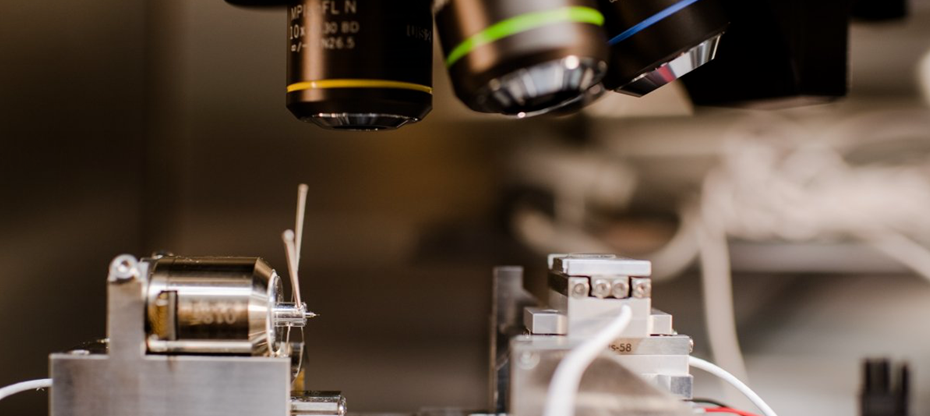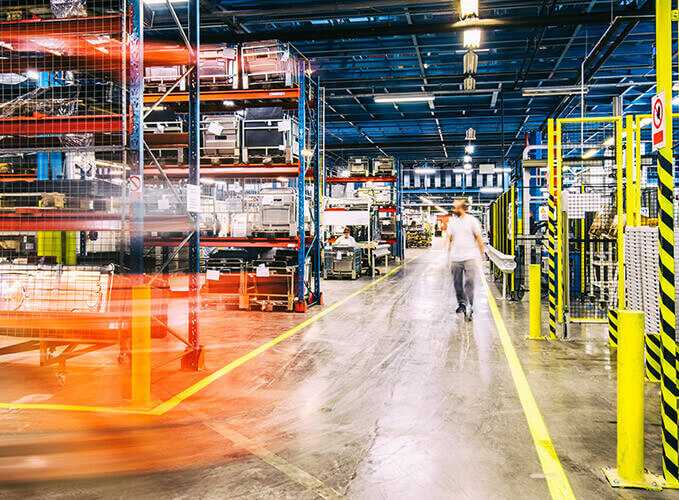Has the rise of the lithium-ion battery revolutionized energy storage?
In recent years, the demand for more efficient and sustainable energy storage solutions has grown exponentially. With the rise of renewable energy sources such as solar and wind power, there is a pressing need for batteries that can store and release energy efficiently. The lithium-ion battery has emerged as a key player in this arena, revolutionizing energy storage and paving the way for a greener future.
The lithium-ion battery is a rechargeable device that uses lithium ions to store and release energy. It is known for its high energy density, long cycle life, and low self-discharge rate. These characteristics make it an ideal choice for a wide range of applications, from portable electronics to electric vehicles and even grid-scale energy storage.
One of the key factors driving the rise of the lithium-ion battery is its increasing affordability. Over the past decade, the cost of lithium-ion batteries has dropped significantly, thanks to advancements in technology and economies of scale. This has made them more accessible to a wider range of consumers and businesses, further fueling their adoption.
The automotive industry has been one of the main beneficiaries of the lithium-ion battery revolution. Electric vehicles (EVs) have gained immense popularity in recent years, with major car manufacturers investing heavily in their development. The high energy density and longer range provided by lithium-ion batteries have made EVs more practical and appealing to the general public. As a result, the demand for lithium-ion batteries in the automotive sector has skyrocketed.
Beyond the automotive industry, lithium-ion batteries are also finding applications in the renewable energy sector. Solar and wind power are intermittent sources of energy, meaning that they are not always available when needed. Energy storage systems based on lithium-ion batteries can help bridge this gap by storing excess energy generated during peak production and releasing it when demand is high or when renewable sources are not producing. This not only ensures a reliable supply of clean energy but also reduces the strain on the electrical grid.
Another area where lithium-ion batteries are making a significant impact is in portable electronics. From smartphones and laptops to tablets and wearable devices, these batteries have become the standard power source for our everyday gadgets. Their lightweight and compact design, coupled with their ability to provide a high energy density, have made them the preferred choice for manufacturers and consumers alike.
Despite all the benefits, there are still challenges that need to be addressed to further accelerate the adoption of lithium-ion batteries. One of the main challenges is the limited availability of lithium resources. Lithium is a finite resource, and its extraction can have adverse environmental and social impacts. Researchers are actively exploring alternative materials and battery chemistries that can offer similar performance while reducing the dependence on lithium.

Another challenge is the issue of battery recycling. Lithium-ion batteries contain valuable metals like lithium, cobalt, and nickel, which can be recovered and reused. However, the current recycling infrastructure is not well-equipped to handle the growing volume of spent batteries. Developing efficient and environmentally friendly recycling technologies will be crucial to minimize the environmental impact and maximize the sustainability of lithium-ion batteries.
In conclusion, the rise of the lithium-ion battery has revolutionized energy storage and opened up new possibilities for a greener future. Its high energy density, long cycle life, and decreasing cost have made it the preferred choice for applications ranging from electric vehicles to renewable energy storage. However, challenges such as the limited availability of lithium resources and the need for efficient recycling processes must be addressed to ensure the long-term sustainability of this technology. With continued advancements and innovation, lithium-ion batteries have the potential to shape the way we store and utilize energy in the years to come.
-
 Einleitung In der heutigen schnelllebigen Welt sind Effizienz und Langlebigkeit entscheidende Elemente in jedem Aspekt unseres Lebens. Hierzu zählen auch die Geräte, die wir täglich nutzen, etwa PC-Mäuse. Während kabelgebundene Mäuse jahrelang die traditionelle Wahl waren, hat das Aufkommen kabelloser, mit Lithiumbatterien betriebener Mäuse den Markt revolutioniert. In diesem Artikel werden wir...Weiterlesen
Einleitung In der heutigen schnelllebigen Welt sind Effizienz und Langlebigkeit entscheidende Elemente in jedem Aspekt unseres Lebens. Hierzu zählen auch die Geräte, die wir täglich nutzen, etwa PC-Mäuse. Während kabelgebundene Mäuse jahrelang die traditionelle Wahl waren, hat das Aufkommen kabelloser, mit Lithiumbatterien betriebener Mäuse den Markt revolutioniert. In diesem Artikel werden wir...Weiterlesen -
 A 12V LiFePO4 battery is a reliable and efficient power source that is increasingly used in many applications. LiFePO4 stands for Lithium Iron Phosphate, which is the chemical compound used as the cathode material in the battery. Compared to other types of lithium-ion batteries, LiFePO4 batteries offer several advantages, such as longer lifespan, higher safety, and more stable performance. In...Weiterlesen
A 12V LiFePO4 battery is a reliable and efficient power source that is increasingly used in many applications. LiFePO4 stands for Lithium Iron Phosphate, which is the chemical compound used as the cathode material in the battery. Compared to other types of lithium-ion batteries, LiFePO4 batteries offer several advantages, such as longer lifespan, higher safety, and more stable performance. In...Weiterlesen -
 Der 48-V-LiFePO4-Akku ist ein wiederaufladbarer Akkutyp, der aufgrund seiner langlebigen Leistung und Zuverlässigkeit an Popularität gewonnen hat. LiFePO4 steht für Lithiumeisenphosphat und ist die chemische Zusammensetzung des Kathodenmaterials der Batterie. Diese Technologie erfreut sich in verschiedenen Anwendungen immer größerer Beliebtheit, darunter Elektrofahrzeuge, Solarenergiespeicher und Notstromsysteme. In diesem Artikel...Weiterlesen
Der 48-V-LiFePO4-Akku ist ein wiederaufladbarer Akkutyp, der aufgrund seiner langlebigen Leistung und Zuverlässigkeit an Popularität gewonnen hat. LiFePO4 steht für Lithiumeisenphosphat und ist die chemische Zusammensetzung des Kathodenmaterials der Batterie. Diese Technologie erfreut sich in verschiedenen Anwendungen immer größerer Beliebtheit, darunter Elektrofahrzeuge, Solarenergiespeicher und Notstromsysteme. In diesem Artikel...Weiterlesen -
 Suchen Sie nach einer leistungsstarken Motorradbatterie, die Ihre Fahrt auf die nächste Stufe hebt? Bei LiFePO4-Batterien sind Sie genau richtig. Diese leistungsstarken Batterien sind auf höchste Leistung und Zuverlässigkeit ausgelegt und somit die perfekte Wahl für anspruchsvolle Fahrer, die das Beste verlangen. Das Herzstück jeder LiFePO4-Motorradbatterie ist die fortschrittliche Lithium-Eisenphosphat-Technologie. Das...Weiterlesen
Suchen Sie nach einer leistungsstarken Motorradbatterie, die Ihre Fahrt auf die nächste Stufe hebt? Bei LiFePO4-Batterien sind Sie genau richtig. Diese leistungsstarken Batterien sind auf höchste Leistung und Zuverlässigkeit ausgelegt und somit die perfekte Wahl für anspruchsvolle Fahrer, die das Beste verlangen. Das Herzstück jeder LiFePO4-Motorradbatterie ist die fortschrittliche Lithium-Eisenphosphat-Technologie. Das...Weiterlesen -
 In today's fast-paced and ever-connected world, staying connected while on the go has become a necessity. Whether it's for work or personal use, having a reliable and portable power source is essential. This is where the mobile digital lithium battery comes into play, revolutionizing the way we stay connected. The mobile digital lithium battery is a compact and portable...Weiterlesen
In today's fast-paced and ever-connected world, staying connected while on the go has become a necessity. Whether it's for work or personal use, having a reliable and portable power source is essential. This is where the mobile digital lithium battery comes into play, revolutionizing the way we stay connected. The mobile digital lithium battery is a compact and portable...Weiterlesen -
 Battery Type and Chemistry When selecting a marine battery for your boat, the first crucial consideration is the battery type and chemistry. The common options include flooded lead-acid, AGM (Absorbent Glass Mat), and Lithium-ion batteries. Each type has its advantages and disadvantages, such as maintenance requirements, lifespan, and weight. Understanding the differences between these battery types and choosing the one...Weiterlesen
Battery Type and Chemistry When selecting a marine battery for your boat, the first crucial consideration is the battery type and chemistry. The common options include flooded lead-acid, AGM (Absorbent Glass Mat), and Lithium-ion batteries. Each type has its advantages and disadvantages, such as maintenance requirements, lifespan, and weight. Understanding the differences between these battery types and choosing the one...Weiterlesen -
 As electric vehicles (EVs) become more prevalent, the demand for high-quality lithium-ion batteries is increasing rapidly. China is a leading manufacturer of lithium batteries, and there are many suppliers to choose from. However, not all lithium battery suppliers are created equal, and finding the best one can be challenging. In this essay, we will discuss the factors to consider when...Weiterlesen
As electric vehicles (EVs) become more prevalent, the demand for high-quality lithium-ion batteries is increasing rapidly. China is a leading manufacturer of lithium batteries, and there are many suppliers to choose from. However, not all lithium battery suppliers are created equal, and finding the best one can be challenging. In this essay, we will discuss the factors to consider when...Weiterlesen

